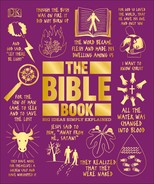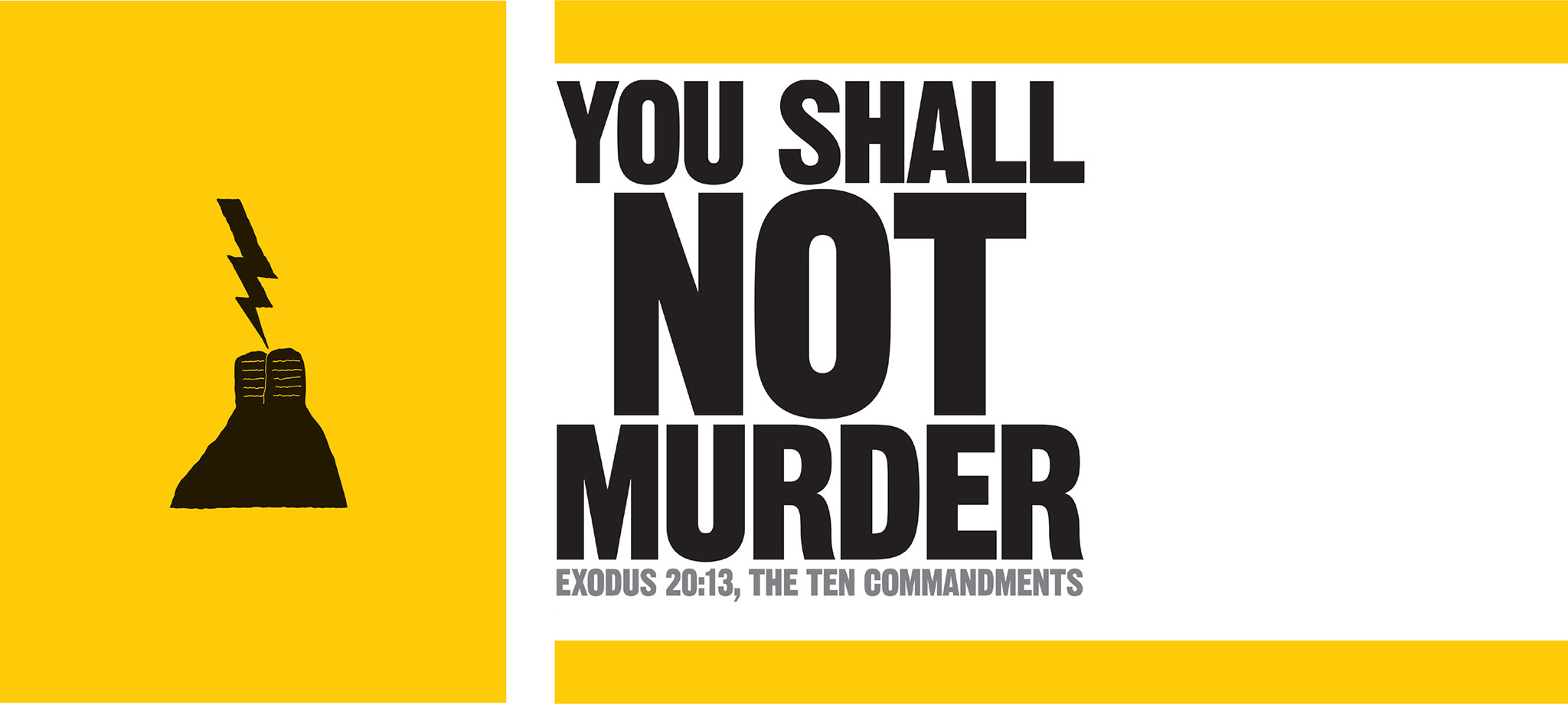
IN BRIEF
Exodus 16:1–20:17
Protecting the Israelites
14th–13th century BCE Mount Sinai, also called Mount Horeb, on the Sinai Peninsula, three months after the Exodus.
Moses The leader chosen by God to challenge the Egyptian Pharaoh and lead the Israelites out of slavery.
God Appears to Moses in physical form as a thick, thunderous cloud.
The Israelites The 12 tribes descended from Jacob, recently liberated from Egypt.
Three months after leaving Egypt, the Israelites arrive at the foot of Mount Sinai in the desert of Sinai, free from the rule of Pharaoh for the first time in living memory. However, after the initial euphoria of rescue, the Israelites struggle to know what to do with their newfound freedom. God summons Moses to the top of the mountain and tells him to make an offer to the people of Israel.
Having rescued them from the tyranny of Pharaoh and provided for their daily needs in the desert, God is prepared to enter into a covenant with them, just as He entered into a covenant with their forefather Abraham. Although all the earth belongs to God, if the Israelites commit to obeying Him, they will become God’s “treasured possession” out of all nations and a “kingdom of priests and a holy nation” (19:5–6). When Moses relays God’s message to the elders, they respond enthusiastically to the proposition: “We will do everything the Lord has said” (19:8). Moses takes their answer back to God.
Through Moses, God then instructs the Israelites to gather at a respectful distance from the bottom of the mountain, while Moses returns to the top to receive the terms of their covenant. A thick cloud then descends over Mount Sinai, and the people hear thunder and loud trumpet blasts and see flashes of lightning, fire, and smoke. The people tremble in fear. It is a clear indication of the gravity of the relationship that they are to share with God.
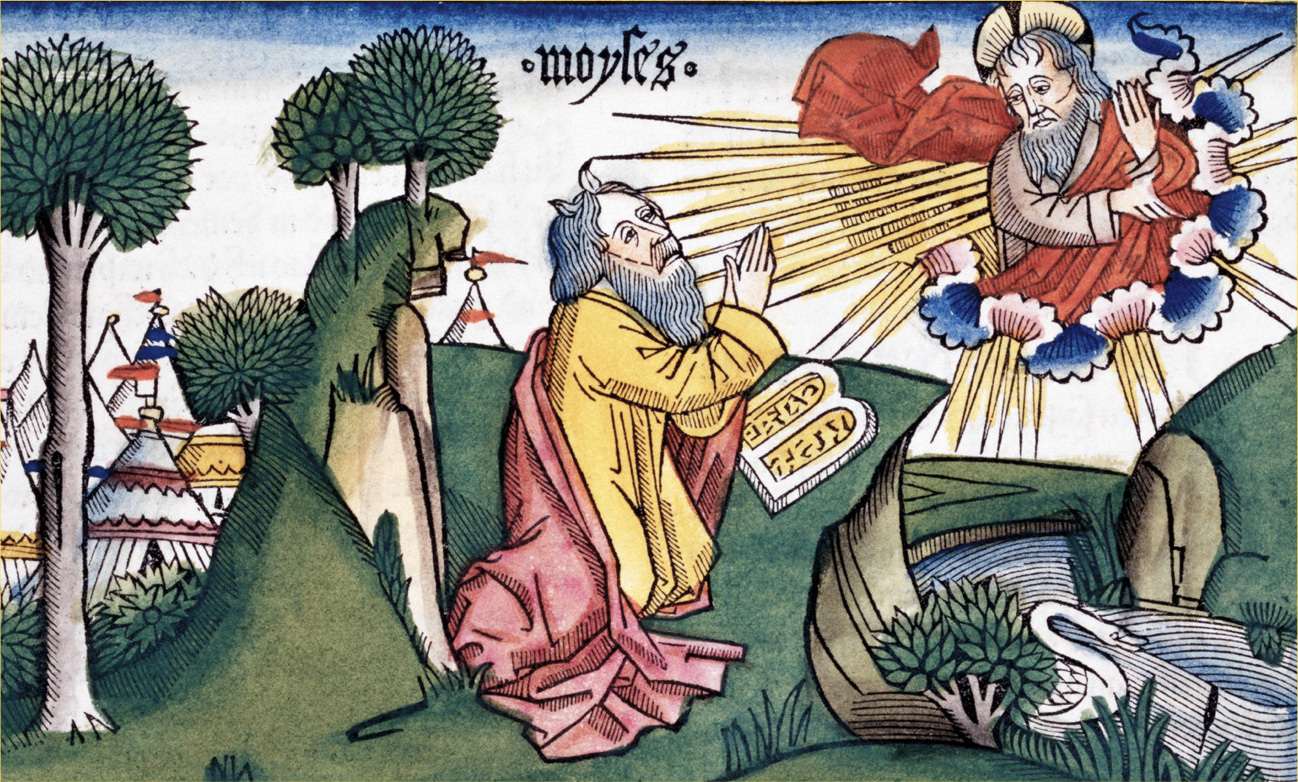
A new covenant
On the mountain, God gives Moses His terms, or laws—the ten foundational rules known as the Ten Commandments, or the Decalogue (from the Greek, “ten words”). The first three concern the Israelites’ relationship with God. First, they are to worship Him alone, rather than merging their obedience to God with reverence for the deities of other people. Next, they are forbidden from making any image or idol of God, because God is not to be viewed in comparison to any earthly or heavenly creature. Thirdly, God’s name is to be used with care and respect—never taken in vain. The Israelites must never forget that they owe their lives to God and not any other human or divine leader.
The fourth commandment instructs the people to keep a Sabbath day, which they could never have done as slaves working without a Sabbath rest. Just as God created the world in six days and then rested, so the Israelites should work for six days and then spend a day resting and relishing God’s presence.
The last six commandments regulate the relationships between God’s own people. They are to honor their parents, and refrain from murder, adultery, stealing, lying, and coveting things that do not belong to them.
After his encounter, Moses comes down the mountain and tells the Israelites the terms of the covenant. They respond enthusiastically: “Everything the Lord has said we will do.” (24:3). Having agreed to the terms, the Israelites wait at the bottom of Mount Sinai while Moses goes back up into the thick cloud of God’s presence.
Moses stays at the top of Mount Sinai for 40 days and 40 nights, during which time God provides him with tablets of stone, inscribed with the terms of the covenant. The tablets are to be a lasting reminder of the agreement between God and His newly rescued people.
Obedience slips
Subsequent events in the Bible prove that it does not take long for the Israelites to break more of the commandments—or to forget them entirely. Toward the end of his life, Moses must reiterate God’s commandments for the generation born and raised during the 40 years in which the Israelites wander the desert (Deuteronomy 5). Centuries later, during the reign of King Josiah, the high priest “discovers” the Book of the Law languishing in a dusty corner of a storeroom at the Temple (2 Kings 22), and King Josiah tears his robe after the word of God is read to him, mortified that he has failed to uphold His laws. The Bible shows time and again that when the Israelites obey the law, they prosper, but when they forget it or actively disobey it, disaster ensues.
God’s holy nation
The Ten Commandments are often misunderstood. Many people see them simply as a list of “dos and don’ts,” but this misses their true significance. Although eight of God’s commandments contain the admonition “do not,” the purpose of the commandments is not primarily to prohibit, but rather to protect and promote God’s “holy nation.” The key to understanding the commandments is found in the opening words of the covenant: “I am the Lord your God, who brought you out of Egypt, out of the land of slavery.” God has already given the Israelites a new sense of identity when He rescued them from the oppressive rule of Pharaoh in Egypt, turning them from slaves into “priests” (Exodus 19:6)—God’s representatives on earth. The Israelites’ life together had been made possible by God’s dramatic regard for them, and now God gives them commandments to protect this new identity, recognizing that it would be too easy for them to fall back into godless ways.
“Now if you obey me fully and keep my covenant, then out of all nations you will be my treasured possession.”
Exodus 19:5–6
Ancient law codes
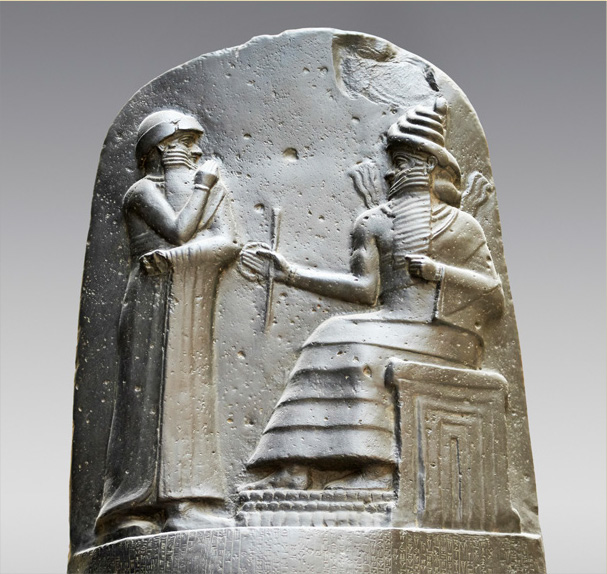
Other ancient Near Eastern societies also had laws to regulate relationships between people and rights relating to property. Some of these laws were recorded in cuneiform script, inscribed in stone, giving scholars an insight into the people who lived around the Israelites in their formative years as a nation, such as the Sumerians, Babylonians, and Assyrians. Typically, a king imposed a rule of law on communities living under his protection, including those that had been conquered. Many take the form of a treaty, in which the ruler offers protection in return for obedience. Such treaties could be described as case law, in which the law dictates what would be done in certain circumstances. Punishments were sometimes specified. In Babylon’s Code of Hammurabi, for example, theft was punished by death, while herdsmen found guilty of fraud received a fine.
The Mosaic Law resonates with these codes, although it is based on the authority of God rather than a human leader.
The Torah

Hebrew for “instruction” or “teaching,” torah refers to the Ten Commandments and the other instructions given to Moses on the top of Mount Sinai. The Israelites understand that God’s torah has rescued them from the restrictive and vindictive rule of Pharaoh and see it as a gift and a blessing.
Throughout the Bible, torah is recognized as God’s good commandments: following the torah will enable humankind to flourish within appropriate boundaries. Torah is also used as a collective term for the first five books of the Bible: Genesis, Exodus, Leviticus, Numbers, and Deuteronomy. These books, often called the books of Moses, are of foundational importance to Jews because they tell the story of how the Israelites came to exist as a nation and contain God’s rule for life. In every synagogue, the Torah is handwritten on parchment scrolls that are kept in the Ark of the Law, symbolizing the Holy of Holies in the ancient Temple of Jerusalem.
More than ten
The Ten Commandments form the backbone of God’s relationship with Israel. There are many other instructions that Moses receives from God to pass on to the Israelites, including instructions for constructing the Tabernacle, and these additional rules are necessary for the application of the Ten Commandments in everyday life. Over time, this larger body of commands and teaching become known as torah, which is still the fundamental set of laws governing Judaism today.
In this episode in the Bible, Moses is presented as God’s great lawgiver, and the law is often called Mosaic law. Today, however, the ten laws have a less prominent position within Judaism than they did in Moses’s time. According to the Babylonian Talmud, a collection of interpretations of the torah and Jewish law compiled in the 4th century CE, priests ceased their recitation of these commandments, due to assertions by opponents, possibly early Christians, that they were the only laws imparted to Moses on Mount Sinai. This had led to the neglect of more than 600 other commands.
Open to interpretation
As with many verses in the Bible, the Ten Commandments are seen differently by various groups. Not only do interpretations of the laws themselves differ—does, for example, adultery refer to sexual acts outside of marriage, or only to the infidelity of married couples?—but different denominations place emphasis on different laws.
The Catholic Church, for example, following the medieval Roman tradition, does not include the commandment concerning the creation of images of God and also specifies as its own commandment that you must not covet your neighbor’s wife. The prohibition against creating images and idols is considered by Catholics to be part of the first commandment to worship no other gods. However, Greek Orthodox and Protestant denominations retain the Ten Commandments as recorded in the Book of Exodus.
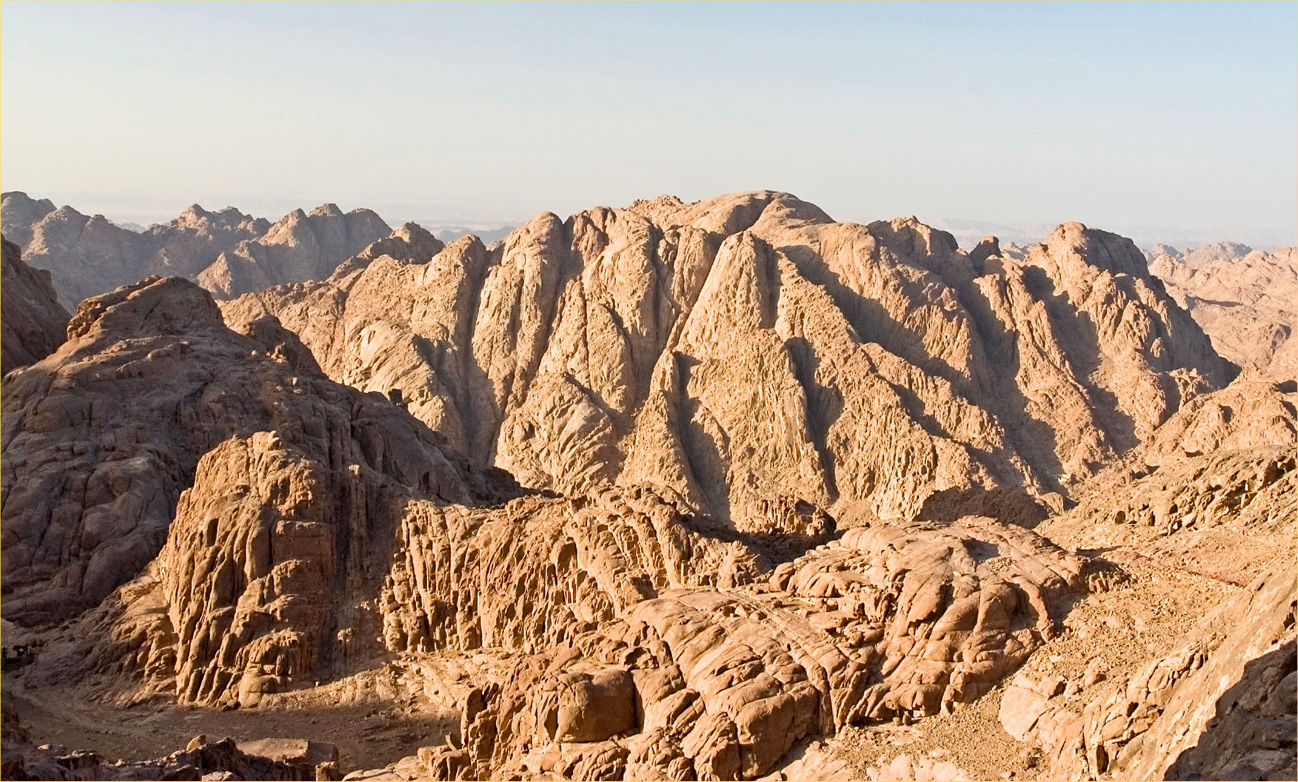
“Then he took the Book of the Covenant and read it to the people. They responded, “We will do everything the Lord has said; we will obey.”
Exodus 24:7
Guide to life
One of the enduring legacies of the Ten Commandments is their combination of what we often see as religious and secular life. Throughout the Bible, there is no clear distinction made between the spiritual life of God’s people and their practical life, or between public and private spheres. God’s law covered all aspects of their lives, including politics and economics, friendships and family.
The Ten Commandments instructed the Israelites to live out their lives as God’s people, showing to other people the justice and generosity that God had first given to them. Because of this positive role of law in the Israelites’ lives, songs were even composed in praise of it. Psalm 17 says: “The law of the Lord is perfect, refreshing the soul.”

See also: The Testing of Abraham • Jacob Wrestles with God • Entering the Promised Land • Call for Repentance
